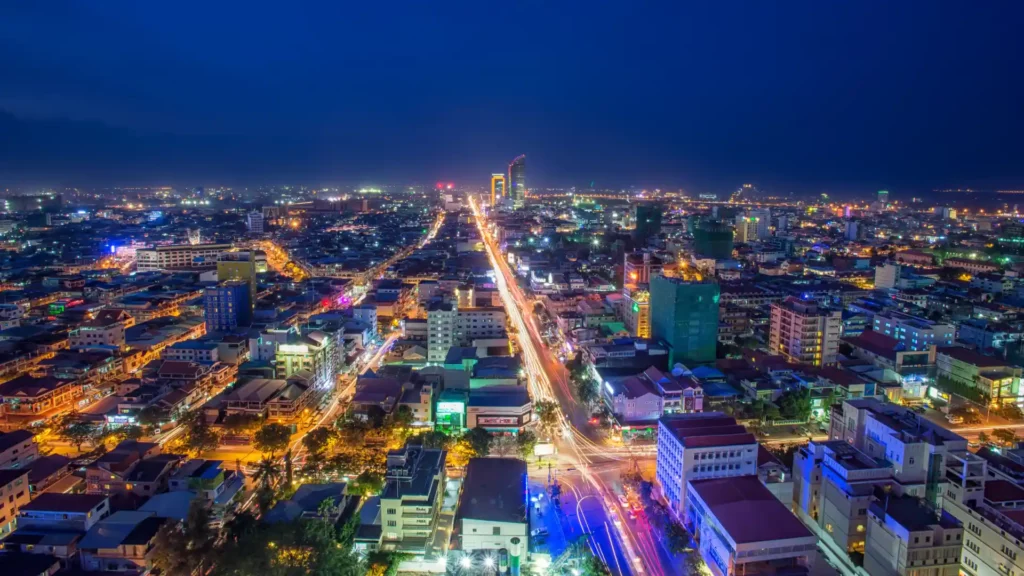Cambodia is pushing for an infrastructural renaissance; however, it will require some assistance from other countries to work on an expected price of $36.6bn. That was the final amount calculated by the Cambodian government and distributed recently in a 174-project plan that would upgrade the public transportation and planned logistics network inside an aggressive time span of only 10 years.
The objective to traverse the country with high-speed rail lines, expressways, and different works fits intimately with the state’s longstanding wish of turning into an upper-middle-income country in 2030 and a high-income nation by 2050.
The building campaign has been put forward by the technocrats in the country since the ascension of the new prime minister Hun Manet, the son of the former prime minister of nearly 40 years Hun Sen. This is done by influencing the foreign allies for closer ties and increased investments.
Hun Manet, at a February groundbreaking for a Phnom Penh bridge funded with a Chinese loan, mentioned that they will not pull out from setting their objectives in building roads and infrastructural framework.
“Roads are like blood vessels to feed the organs wherever it goes … soon we will have the ability not only to just possess [material things] but also for Cambodians to build by themselves infrastructural marvels such as bridges, highways, and subways,” he added.
Cambodia has encountered over twenty years of quick financial development with a portion of the most terrible infrastructural framework in Southeast Asia, as per the World Bank‘s logistics performance index.
The new top state leader hopes to solidify his status after his dad’s long rule, gaining ground on infrastructure will introduce a test for his administration as well as the Cambodian balancing act of international relations.
Carrying out the strategy with a plan for the projects and little could introduce an opportunity from international rivals as other foreign partners push for influence – particularly as rivalry escalates between two of its biggest sponsors, China, and Japan.
The Cambodian government and business organizations truly do support foundation projects in the realm, yet China and Japan together record a lot of those investments.
Up until this point, China’s Belt and Road Initiative (BRI) has driven the infrastructure charge with significant ventures, for example, the realm’s first expressway, which runs from the inland capital of Phnom Penh to the seaside city of Sihanoukville.
Japan has also kept its own consistent plan, narrowing in on an array of ventures like new wastewater treatment offices and renovations to existing roads. Maybe most outstanding is a Japanese-driven development that might more than triple the limit of the international deep seaport of Sihanoukville.
All Eyes on China
Allegations of China catching underdeveloped or poor nations in debt traps have made Beijing keep some distance from giving huge credits to nations to finance megaprojects – ordinarily characterized as those valued at more than $1bn.
These are regularly supported with “build-operate-transfer” arrangements, in which the organization supervising the work assumes the cost of producing it as a trade-off for the incomes produced by the completed task over a predetermined period.
Toward the end of the agreement, which may span decades, ownership moves to the government of the host country. Key bits of Cambodia’s 10,000-foot view vision will rely upon that sort of support.
Cambodia’s Allies
The realm’s all-inclusive strategy for infrastructure incorporates recommendations for nine megaprojects with an estimated amount of more than $19.1bn. While the vast majority of these are as yet being read up for possibility, practically all have been contacted eventually by JICA or the China Road and Bridge Corporation (CRBC), an auxiliary of the state-owned company China Communications Construction Company.
CRBC recently drove the development of Cambodia’s first expressway, which came online in late 2022 and has by and large been hailed as a triumph.
The extensive plan also contains shipping projects. The biggest of these is a 180-kilometer-long, 100-meter-wide shipping canal to connect the Mekong River system at Phnom Penh directly to the Gulf of Thailand. The $1.7bn channel would bypass the current, less helpful river shipping route that runs the length of the Mekong through Vietnam.
The canal is studied by CRBC for its economic possibility. Hong Zhang, a China public policy postdoctoral fellow at the Harvard Kennedy School’s Ash Center, said the force of the venture could see it through regardless of any concerns.
“If the project has a very strong political backing, I don’t think environmental and social impacts would be in the way or prevent it from happening,” Zhang told Al Jazeera.
Zhang also added that Cambodia’s overall political and macroeconomic stability- in addition to its government’s support of China’s position – has likely managed to more choices that different nations wouldn’t be guaranteed to get. Regardless of whether not every one of the tasks in the end-all strategy happens, those in the public operations and transportation industry see a great deal to like.
